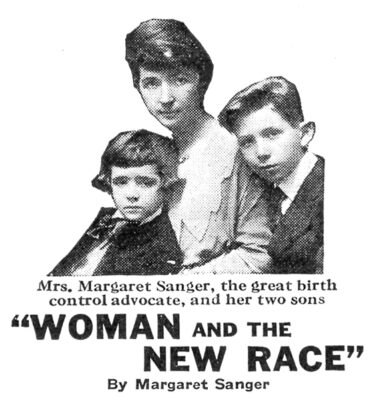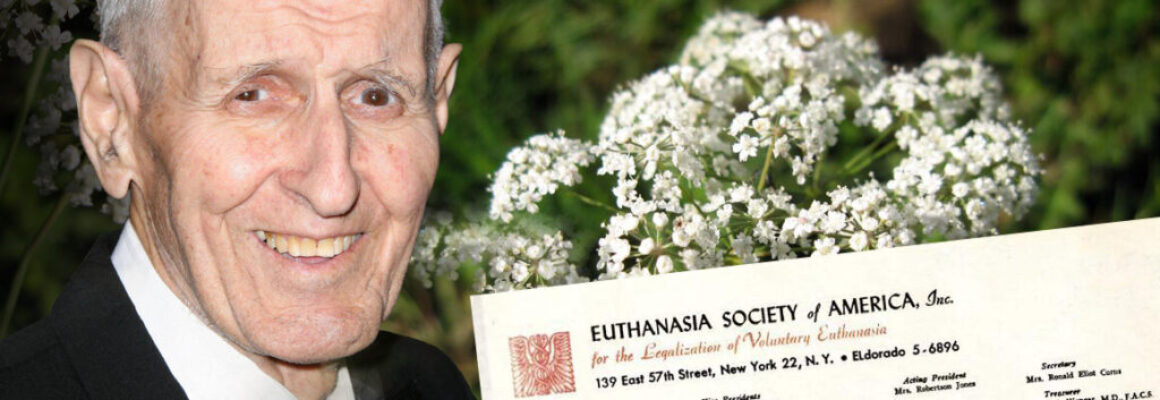
On the subject of abortion few figures loom as large as Margaret Sanger. Born Margaret Louise Higgins in 1879 to a large provincial family in Corning, New York, she rose to prominence by campaigning for greater access to birth control for women. However, beneath the surface of what many in the day already regarded as her controversial activities lay an even darker side that can be summed up by two words. Euthanasia and… Eugenics.
By 1911, Sanger had become a member of the Women’s Committee of the New York Socialist Party. Three years later, she launched The Woman Rebel, a radical feminist publication. By 1916, she had opened the first birth control clinic in the United States. It proved the springboard to the formation of a body called the American Birth Control League. The organization underwent several name changes before adopting the name we know today as Planned Parenthood. The rest of the story as to how it grew into the largest provider of abortions in the nation is widely known and well documented.
It is to her other two interests, eugenics and euthanasia, that we perhaps must look to gain a better insight into the workings of Sanger’s mind and motivations. Her vehement disregard for the sanctity of life can most likely can be traced to her father Michael, an avowed atheist. He also shared similar socialistic beliefs, with its fundamental doctrine that the requirements of the State always outweigh the rights of the individual. This dehumanising attitude has perhaps never been more simply and better expressed than by Orson Welles in the movie The Third Man (1947).
Look down there. Tell me. Would you really feel any pity if one of those dots stopped moving forever? … Nobody thinks in terms of human beings. Governments don’t. Why should we?
HARRY LIME
Evidence of Sanger’s involvement with euthanasia and eugenics and has been carefully concealed over the years, so as not to tarnish the ethical standing of Planned Parenthood. In an age where disinformation is rife, it is important to examine the proof behind these claims. In the instance of eugenics, it is beyond question that Sanger was a eugenicist as indeed were many of her associates. The prominent Ku Klux Klan member and writer Lothrop Stoddard was a fellow-founding member of the Board of Directors of the American Birth Control League. Both were members of the American Eugenics Society. A number of its founders, including Charles Davenport and Harry H. Laughlin, had strong professional ties to the eugenics movement in Nazi Germany.
Always to me any aroused group was a good group, and therefore I accepted an invitation to talk to the women’s branch of the Ku Klux Klan…
MARGARET SANGER (An Autobiography: A Fight for Birth Control)
Like the advocates of Birth Control, the eugenists, for instance, are seeking to assist the race toward the elimination of the unfit.
MARGARET SANGER (Essay – 1919)
Sanger’s association with euthanasia has been kept a much more closely guarded secret, and has still not been fully acknowledged by the mainstream media. While working on a forthcoming book, the Editor of this magazine uncovered some of the earliest evidence.
Birth control and euthanasia are part of a single project designed to bring the entrance into life and the exit of life … under control of reason.
MARGARET SANGER (Attributed by Eleanor Dwight Jones, 1951)
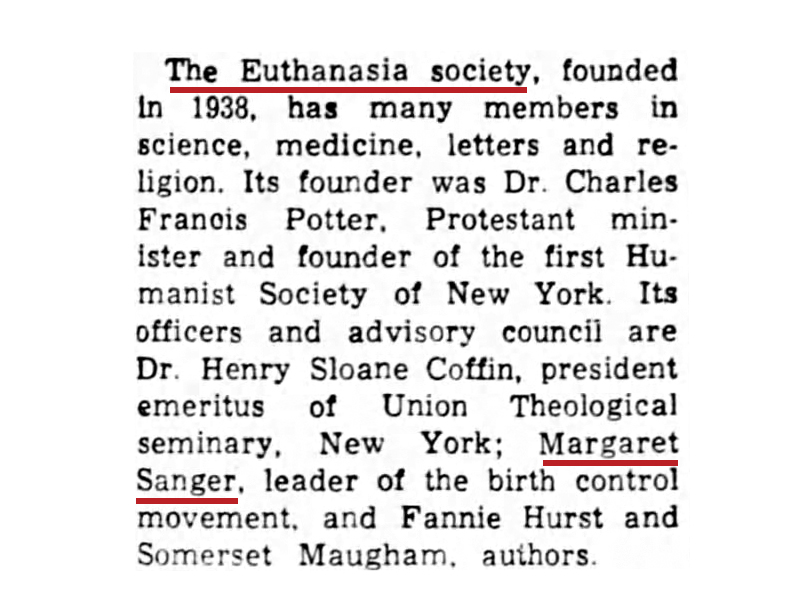
THE TRI-CITY INDEPENDENT (1949)
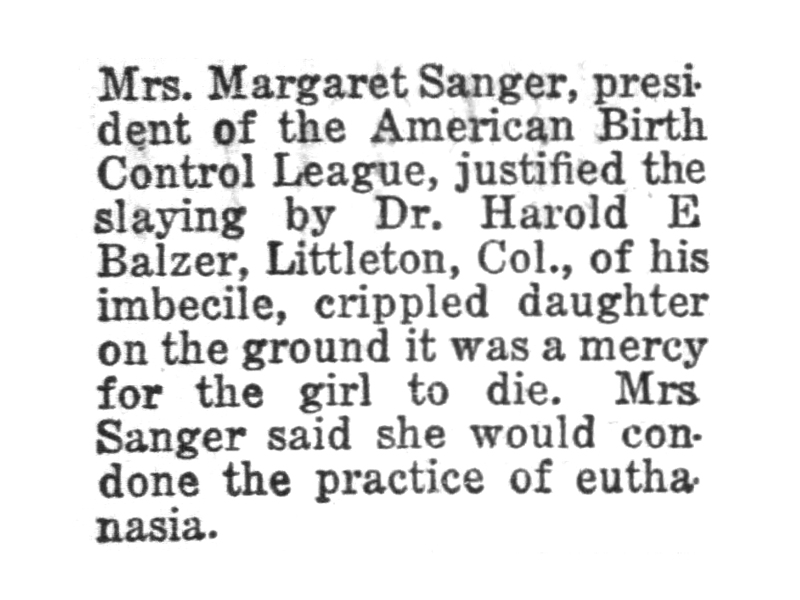
EL PASO HERALD (1925)
As more and more facts come to light about Sanger’s involvement with euthanasia and eugenics, Planned Parenthood has fought to distance itself from its once sainted founder. Indeed, in 2021 Planned Parenthood of Greater New York announced that it would be removing her name from its Manhattan clinic.
Considering Sanger’s own words on eugenics, the elimination of the unfit before birth, it is not difficult to guess what sectors of society she had in mind when advocating euthanasia.
Despite suffering throughout her life from consumption (tuberculosis), possibly inherited from her maternal side, Sanger chose to have three children with her first husband, William.
Sanger’s personal life was no less controversial. In 1922, after divorcing William, a man of modest means, she married business tycoon Noah H. Slee of the Three-In-One Oil Company. He promptly began to fund her activism. Sanger’s children were shipped abroad to be educated. While still legally married to her first husband, she had also embarked upon an affair with writer and euthanasia campaigner H. G. Wells.
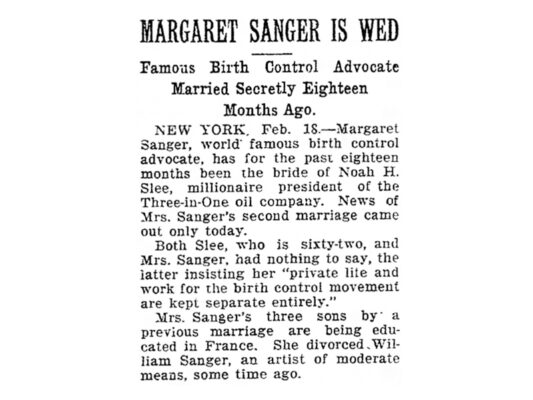
LINCOLN JOURNAL STAR (1924)
